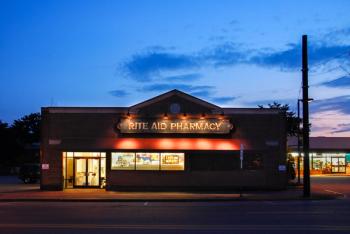
NASP Concerned With New Medicare Part B Payment Model
NASP outlines issues with the new proposed rule for Medicare Part B.
The National Association of Specialty Pharmacy (NASP) recently submitted a letter to the US Centers for Medicare & Medicaid Services (CMS) outlining the organization’s concerns regarding a new Medicare Part B drug payment model.
The new proposed payment model will test alternative payment designs in order to see if there will be a reduction in costs, while maintaining or improving the quality of care received by Medicare beneficiaries.
In phase 1 of this new payment model, there would be a 2.5% add-on plus a flat free rather than the 6% add-on to average sales price currently in place. In phase 2, value-based purchasing tools similar to those used by commercial insurers would be implemented.
NASP President Burt Zweigenhaft expressed concern that this new payment model was developed without any stakeholder input, which leaves out the perspective and advice of organizations that deal with specialty pharmacies. Lack of information from these stakeholders could lead to proposals that are too broad, are lacking in important details, and are misguided.
NASP said that this occurrence is troublesome and believes the new proposed rule will not accomplish CMS goals, but would instead transition incentives to other classes of drugs or incentivize treating Medicare beneficiaries in an outpatient hospital setting.
The proposal will require that providers furnishing Part B drugs and who are in a certain geographic location will have to take part in the payment model, which includes millions of beneficiaries.
The concern expressed by NASP is that the CMS does not have prior experience implementing such a broad program in a short time span, which has the ability to effect Medicare beneficiaries negatively.
Also, according to the letter, NASP said that CMS serves a completely different community than commercial health insurers, pharmacy benefit managers, and other stakeholders that they modeled their proposals after. These programs were not implemented on a large scale, like the CMS model would be.
NASP also cautions that 60 days after the final rule is displayed is too soon and any implementation period should be much longer. This change would need to be explained to insurers and beneficiaries, while CMS would have to change their education plan, as there would likely be some confusion.
According to the letter, drugs covered under Part B that are provided outside of the “incident to” benefit category should be excluded, since these drugs do not serve the purpose of the proposed new rule.
A question of why CMS wishes to include these drugs, even though there is no financial incentive for the prescriber, is asked by NASP. Since it does not meet the reasoning behind the new rule, it should not be included, the letter stated.
This would include non-infused drugs furnished by durable medical equipment (DME) suppliers, including immunosuppressant, oral chemotherapy, oral antiemetic, inhalation drugs used with DME, and clotting factors.
The inclusion of these drugs, which are important to survival, may lead to problems with medication adherence, deviation from the treatment regimen, and may lead to issues accessing care for some patients.
NASP believes that consequences from including these drugs may lead to specialty pharmacies not being able to always supply the same generic drug, but may have to choose a different drug due to shortages and market fluctuations, in addition to fluctuations in immunosuppressants that could have severe consequences for transplant patients.
Lastly, drugs that are not in the “incident to” setting are mostly distributed by specialty pharmacies. The pharmacist does not prescribe the drug, so there is no financial connection between writing the prescription and selling the drug, which is much different from the “incident to” drugs where the prescriber also sells the drug.
NASP also cites proposed payment as a source of tension, since they believe the fee does not cover all of the clinical and educational services provided by specialty pharmacies. According to NASP, the services offered by these pharmacists drive medication adherence, proper management of medication dosing and side effects, and proper medication use.
These services have superior clinical and economic outcomes and also expedite the patient’s access to care, according to NASP. However, all of these services are not separately reimbursed, but are covered by the current reimbursement.
NASP writes that it costs an average of $200 for transplant therapy for the first 6 months of therapy due to administrative costs, patient education, and medication and dose adjustments. The costs for oral oncolytics are similar due to educational components and administrative costs.
Shifting money from 1 therapy will likely impact services and NASP believes that independent specialty pharmacies will not be able to provide specialized services anymore, which could impact compliance and health outcomes for patients.
The phase 2 proposal does not include any information about paying for care coordination, disease education, patient monitoring, or other services mentioned in the preamble of the proposed rule, which have all reduced costs and improved outcomes in the past, according to NASP.
CMS also shows Medicare Part D as an example for implementing drug utilization tools, but they do not address the Medicare Part D Medication Therapy Management programs and other disease education programs in Part D.
As written, NASP thinks that the phase 2 proposed rule is inconsistent with its intent and seems to be geared more towards reducing drug spending and not towards managing the appropriate utilization, while keeping appropriate access and improved health outcomes.
Finally, CMS does not mention required programs, such as the FDA Risk Evaluation and Mitigation Strategy (REMS) that ensures the benefits of drugs outweigh the risks.
Many biopharmaceutical companies partner with specialty pharmacies so all requirements of REMS are met. NASP concludes that without the help of specialty pharmacies, it is likely that REMS programs may not be effective and could fail to meet FDA requirements.
Newsletter
Stay informed on drug updates, treatment guidelines, and pharmacy practice trends—subscribe to Pharmacy Times for weekly clinical insights.




















































































































































































































